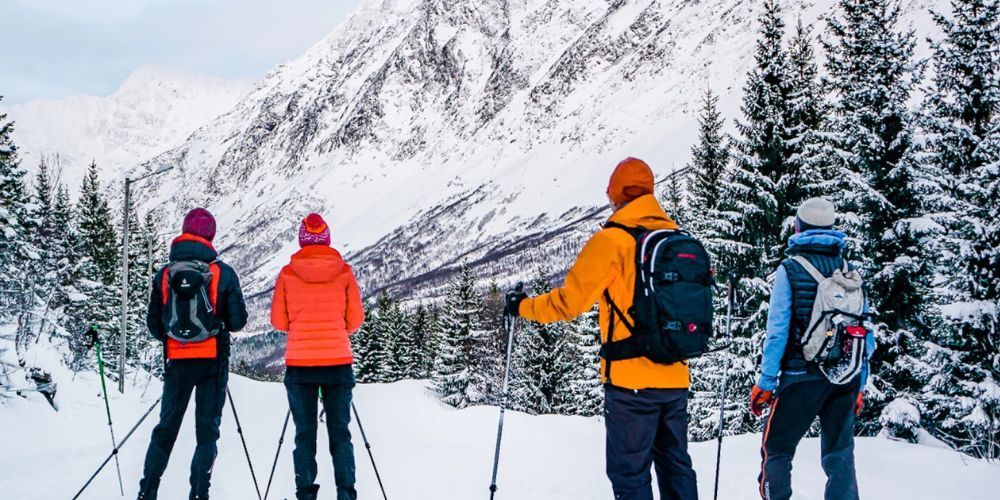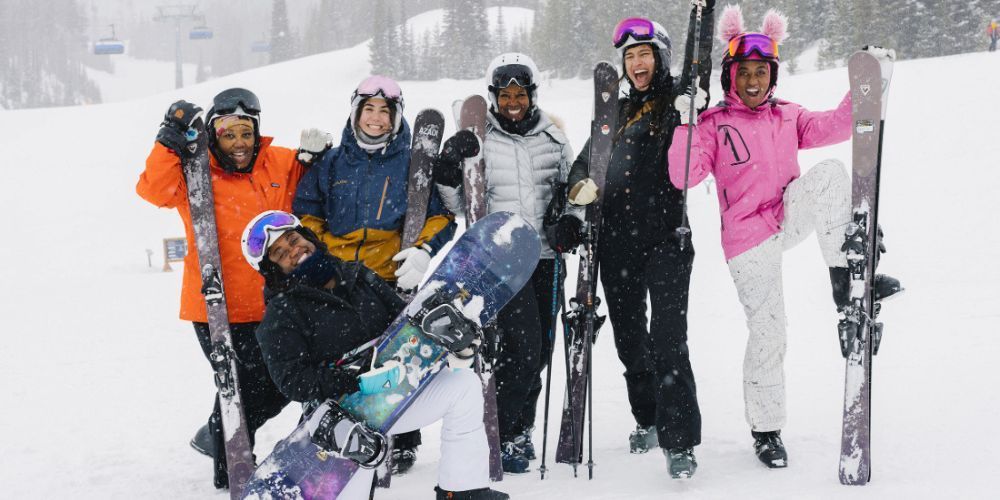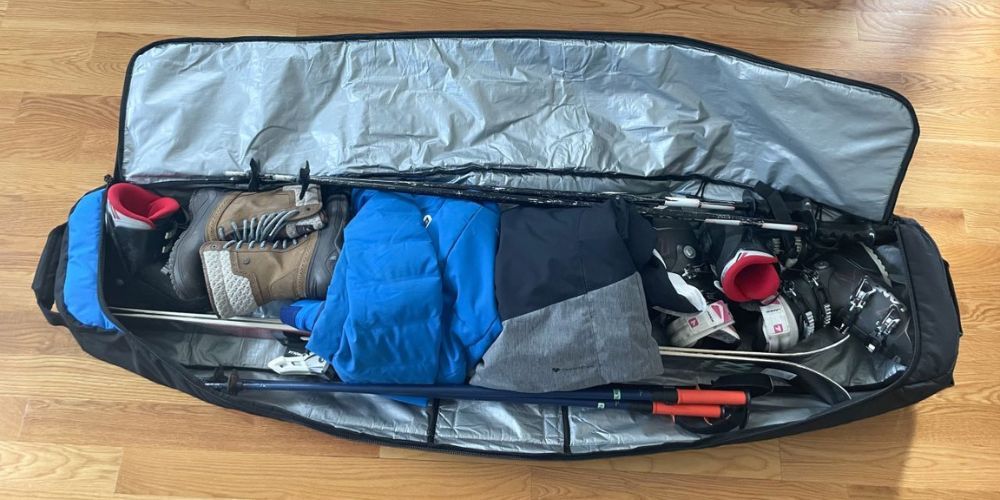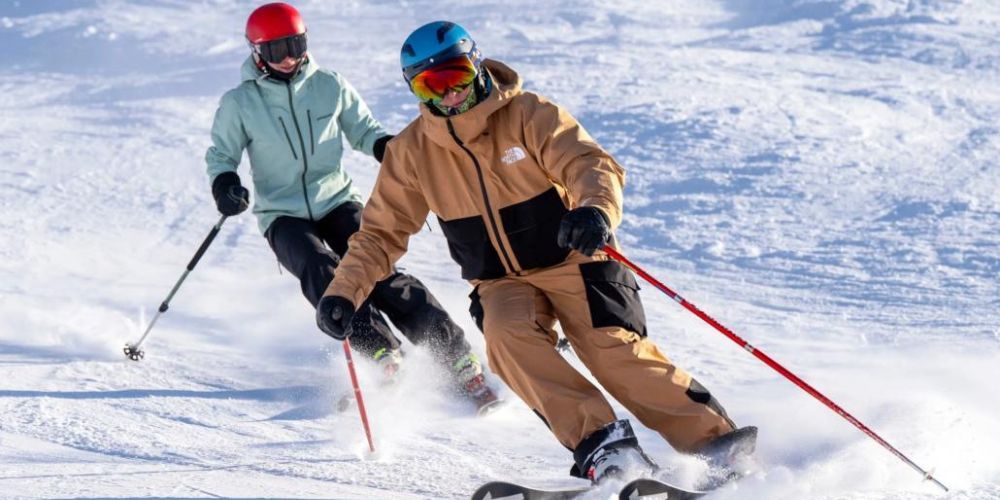William Flaiz is a lifelong athlete and outdoor enthusiast with a deep passion for adventure and sports. With over two decades of experience competing in marathons, triathlons, adventure races, and a wide range of recreational activities, William brings a wealth of knowledge to Sports and Nature Gear. Having explored 49 U.S. states and over 25 national parks, his extensive travels and hands-on experience with gear and gadgets provide readers with practical, expert advice for their own outdoor adventures. Whether it’s running, biking, kayaking, or hiking, William’s insights are invaluable to anyone looking to enhance their experience in the great outdoors. Read his full bio.
Best Ski Pants for Men and Women: Waterproof and Insulated Options
Picking the right ski pants involves more than just grabbing the first pair you see; it's about ensuring your time on the slopes is warm, dry, and enjoyable. From battling cold winds at the summit to navigating sudden snow showers mid-descent, your gear must perform flawlessly under various conditions. That’s why quality waterproof and insulated ski pants are crucial.
We've dedicated extensive hours to research, comparing product features, reviewing user testimonials, and even testing some options in harsh environments. Our findings spotlight some of the best brands known for their reliable performance and advanced technology. Whether you're looking for optimal insulation or superior waterproofing, certain names consistently deliver top-tier satisfaction.
Ski pants are specially designed outerwear that provide warmth, waterproofing, and protection during skiing and other winter sports activities. They typically feature insulation, windproof materials, and additional attributes like adjustable cuffs and ventilation, making them essential for maintaining comfort and performance on the slopes.
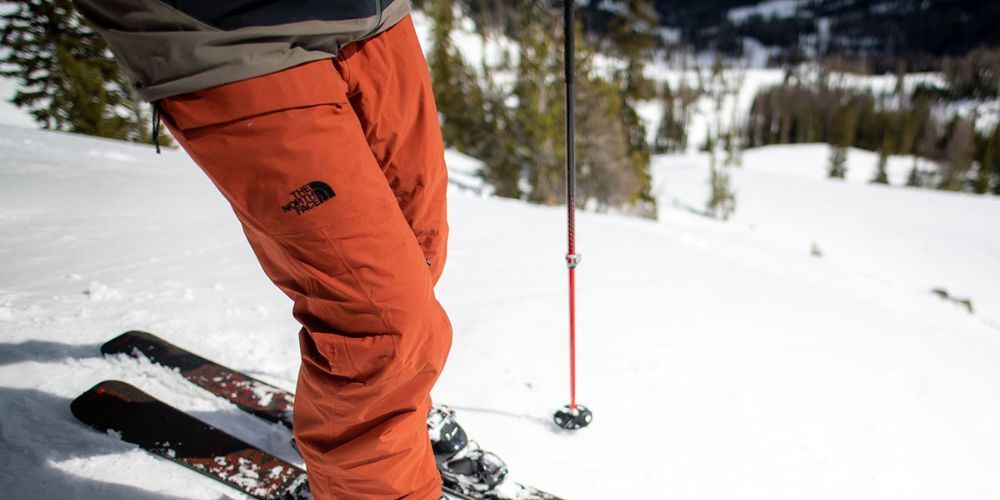
Top Brands for Ski Pants
The ski apparel market is filled with a variety of brands, but some have carved out identifiable niches through their commitment to advanced technology and user satisfaction. One such brand is Arc'teryx, renowned for its high-performance gear designed to withstand the toughest conditions on the slopes. Their ski pants excel in both form and function—their Sentinel line, for example, is celebrated for utilizing GORE-TEX fabric, ensuring maximum waterproofing while remaining breathable. This means that no matter how extreme the weather conditions get, skiers can trust they will stay dry and comfortable.
Moving onto another trusted name, The North Face combines style with practicality seamlessly. Their Freedom Insulated Pants are particularly popular among both casual and serious skiers because they come equipped with DryVent technology, which provides excellent water resistance without minimizing breathability. This is ideal for those long days on the mountain where both comfort and performance are priorities.
Another admirable company in the realm of ski pants is Patagonia. Known for their environmental consciousness, they never compromise performance in their pursuit of sustainability. The Powder Bowl Pants are a testament to this balance, featuring impressive insulation along with state-of-the-art waterproofing from H2No® Performance Standard technology. Skiers appreciate not only their technical prowess but also the brand's commitment to sustainability and responsible manufacturing practices.
Each of these brands has developed a loyal customer base thanks to their commitment to quality. Understanding the specific materials and technologies used in their ski pants can aid you in making an informed choice tailored precisely to your skiing needs. Let's now shift our focus to the importance of fabric quality when selecting the perfect ski pants.
Evaluating Fabric Quality
The fabric quality of ski pants dictates how well they perform under various conditions, influencing everything from comfort to durability. When you’re exposed to harsh weather on the slopes, your choice in fabric goes beyond aesthetics; it’s about surviving the elements while enjoying your time outdoors.
Consider that a high-quality fabric should offer protection against snow and wind, while still being breathable enough to allow moisture from perspiration to escape. This is crucial, especially during rigorous activities like skiing or snowboarding when temperature regulation can make all the difference.
Breakdown of Key Fabrics
GORE-TEX: Renowned for its waterproof and breathable qualities but often comes at a premium price. Its multi-layer construction keeps water out while allowing sweat vapor to escape, making it ideal for high-intensity skiing. Whether sloshing through slush or navigating icy conditions, GORE-TEX remains a top performer.
H2No®: Patagonia’s proprietary fabric offers excellent performance with an eco-friendly approach. It provides reliable waterproofing and breathability without sacrificing sustainability. If environmental impact is on your mind, this could be a consideration worth noting.
DryVent: The North Face's technology ensures durability and moisture management. Specifically engineered for athletic activities, DryVent is designed to handle the dynamic range of winters—keeping you dry without overheating.
Considering insulation types is also important as it directly affects warmth, which influences comfort levels when navigating through cold temperatures. For example, a pair like the Women's Arc'teryx Sentinel AR Pants made with GORE-TEX provides optimal protection against heavy snowfall while maintaining high breathability. This means you can enjoy active skiing without feeling damp or chilled.
With the fabric quality established as a foundation, it's essential to examine how different types of insulation contribute significantly to comfort and heat retention during those chilly winter adventures.
Effective Insulation Options
Insulation is an essential component of any skiing outfit because it keeps your body heat in while preventing the cold from seeping through. The right insulation enhances comfort and allows for mobility, which is critical when navigating intricate trails or executing precise maneuvers. Effective insulation comes primarily in two forms: synthetic and down, each with its own set of advantages and considerations.
Synthetic Insulation
Synthetic insulation has gained immense popularity due to its lightweight design and impressive thermal performance. Materials such as PrimaLoft and Thinsulate excel at keeping warmth intact even in wet conditions, making them ideal for unpredictable weather often encountered on ski trips.
For instance, consider the Burton GORE-TEX Ballast Pants that utilize PrimaLoft. These pants not only keep you toasty but also ensure you remain mobile while conquering the slopes. This combination is essential since a heavy layer can hinder movement, affecting your performance while skiing.
According to studies, synthetic insulating materials can retain up to 80% of their warming properties even when wet, so if you find yourself caught in a snow shower, you won’t be left shivering.
Down Insulation
On the flip side, down insulation is renowned for its exceptional warmth-to-weight ratio and compactness. However, it's crucial to recognize its limitations; this type of insulation loses significant insulating power when wet. Therefore, using down in wetter climates could lead to discomfort and coldness as it fails to trap heat effectively.
Research indicates that down retains only about 30% of its insulating capabilities when exposed to moisture—substantially less than synthetic alternatives.
It’s a balance game: if you expect dry conditions and prioritize warmth, down might be the right choice for you. However, if versatility and moisture management are your concerns, synthetic insulation is the safe bet.
Understanding these points can impact your skiing experience. The choice between synthetic and down will largely depend on your specific environment and personal preferences—where one type may shine in certain aspects yet falter in others.
With this understanding of insulation types under our belts, let’s shift gears to examine another critical element of ski pants: ensuring they possess key waterproof qualities while maintaining breathability.
Waterproof and Breathable Features
Skiing often means braving the elements, where snow can transform from a playful flutter to a relentless barrage. This is where waterproof and breathable technologies come into play, serving as the crucial barrier between enjoyment and discomfort. The heart of these features lies in three key measurements: waterproof ratings, breathability ratings, and their effectiveness in real-world situations.
Waterproof Ratings
Waterproof ratings are essential when choosing ski pants because they indicate how well a fabric repels water. Typically measured in millimeters (mm), this rating specifies the height of a column of water the fabric can withstand before it starts leaking. For instance, a rating of 20,000mm means that the fabric can block a column of water measuring 20 meters tall—a significant level of protection. It’s not just about staying dry; it's also about maintaining comfort during wet conditions.
It’s noteworthy that higher waterproof ratings also often increase durability, meaning your investment pays off over time.
Breathability Ratings
Equally important is breathability, which is crucial during high-energy activities like skiing. Breathability ratings indicate how efficiently moisture can escape from inside the pants. These ratings are measured in grams, with a rating of 20,000g meaning that the fabric can release 20,000 grams of water vapor per square meter within 24 hours. This aspect is vital because while you may be fighting off harsh weather outside, your body generates heat and sweat on the inside. If those vapors can't escape, you’ll quickly find yourself damp and uncomfortable—an unwelcome scenario on a day filled with turns down the slopes.
The Arc'teryx ski pants lead the pack with superior waterproofing and breathability ratings that cater to aggressive skiers tackling varied terrains and conditions. On the other hand, while Patagonia provides decent values at a more accessible price point, those focusing on deep powder days might want to consider higher specifications for peak performance.
With an understanding of waterproofing and breathability established, we now shift our focus to features that enhance overall comfort on the slopes.
Comfort and Adjustable Fit
Comfort and adjustability are not merely personal preferences; they are vital to ensuring that ski pants perform at their best. Imagine zip-lining down a slope but feeling restricted by ill-fitting gear. The right fit allows for flexibility and freedom of movement, crucial during exhilarating descents or quick adjustments on the fly.
Look for pants that feature adjustable waistbands—this is a game-changer. You can tailor the fit according to your layers underneath or simply your comfort level for the day.
Adjustable Features
Additionally, features such as reinforced cuffs and articulated knees contribute significantly to your overall experience. Reinforced cuffs help protect against wear and tear while navigating snow-packed terrain, extending the life of your gear. Articulated knees allow for a more natural range of motion, crucial for skiing techniques that require quick turns or deep knee bends.
A standout feature to consider is The North Face's Chimera Straps, which facilitate easy adjustments to the waistband while you’re on the go. Such innovations enable skiers to adapt quickly without removing their gear, providing greater convenience and focus on what truly matters—enjoying the slopes.
Now that we've examined these adjustable options, let's look at how padding and lining play a role in overall comfort.
Padding and Lining
When it comes to added comfort, fleece-lined waistbands and inner thigh vents can make all the difference. These features enhance coziness against your skin while allowing for breathability—keeping you warm when temperatures dip yet cool enough during high-energy runs.
For instance, take Flylow Baker Bibs; they come equipped with inner thigh vents designed to regulate body temperature effectively during rigorous activities while maintaining an adequate warmth level during cooler moments throughout the day.
The importance of padding cannot be overstated, especially if you're spending long hours out in the cold. Well-padded ski pants help absorb shock when navigating rough snow conditions or falling, providing a layer of protection against unexpected bumps or impact.
With these insights on comfort and adjustable fit tucked away, let’s now look at how these features influence your overall experience while gliding down the slopes.
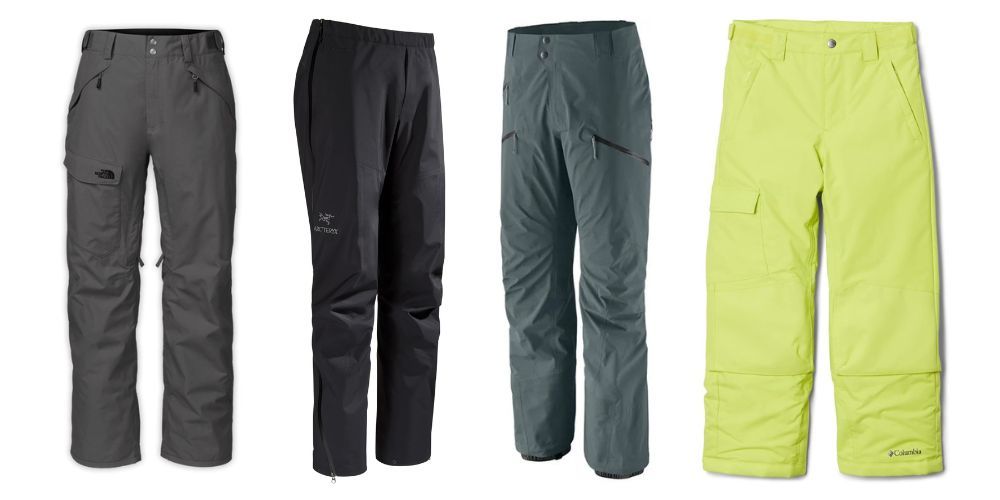
Performance on the Slopes
The performance of ski pants during actual skiing can dramatically affect how you feel on the mountain. It’s about more than just keeping warm; it’s about safety, comfort, and ultimately, enjoyment. When hitting those snowy terrains, your pants should feel like a second skin—allowing you unrestricted movement while also providing essential protection.
Mobility and Flexibility
Take mobility and flexibility as key elements in choosing your ski pants. The type of fabric used can be a game-changer. For instance, brands such as Helly Hansen utilize 4-way stretch textiles in their Alpha Shell Pants to enable freer movement. This design allows you to glide gracefully down slopes while executing those sharp turns or jumps without feeling restricted. Imagine needing to maneuver quickly to avoid an obstacle; flexible pants can make all the difference in maintaining your balance and control.
Similarly, consider the construction of the knees and hips. High-quality ski pants often feature articulated joints, which ensure that they move with you rather than against you. If you're considering a pair, try squatting or lunging in them before making a purchase—this small test can reveal how well your prospective pants will perform when put to the test on the slopes.
Durability
Durability is another crucial aspect that cannot be overlooked. A seasoned skier once shared, "My Arc'teryx Sabre LT Pants withstand repeated falls and scrapes without signs of wear." This testimonial reflects not only the quality of material used but also speaks to the inherent ruggedness needed for aggressive skiing. Ski pants endure a lot: branches snatching at them during tree runs, rough icy surfaces during falls, and even abrasion from ski edges.
Before investing, check reviews specifically mentioning durability tests in real skiing scenarios. If possible, look for reinforced areas around the cuffs and knees, as these spots are prone to wear and tear. Materials like nylon or polyester are often excellent choices for enhancing longevity due to their inherent strength compared to thinner fabrics.
While materials and construction greatly influence performance on the slopes, being mindful of the weather will guide your selection of ski pants for each outing.
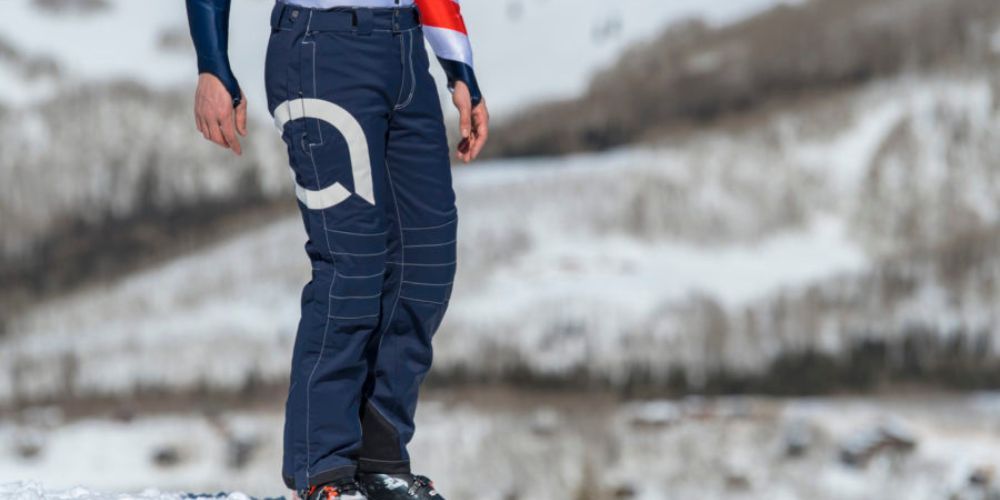
Choosing Based on Weather Conditions
Weather conditions dramatically affect your skiing experience, influencing the type of ski pants you should choose. Understanding what to look for will help you enjoy your time in the snow without unwanted distractions like being cold, wet, or uncomfortable.
Cold Conditions
In extremely cold weather, warmth becomes your top priority. Look for ski pants that offer high insulation levels and windproof materials. Thick insulation materials such as down or advanced synthetic options can trap body heat and keep you comfortable during long hours on the slopes.
For instance, Columbia Bugaboo II Pants are praised for their robust insulation, making them excellent choices when temperatures dip significantly. To further ward off the chill, consider features like high collars and adjustable cuffs to enhance coverage.
While chilly winds can be a hassle, wet or slushy conditions present their own challenges that require specific gear considerations.
Wet or Slushy Conditions
In situations where you're facing rain or slushy conditions, prioritize ski pants with high waterproof ratings and efficient ventilation systems. Being wet can ruin a day of skiing faster than anything else. Look for materials like GORE-TEX that provide excellent moisture resistance while remaining breathable.
Patagonia Powslayer Pants serve as a stellar example of this balance; they excel at repelling water without trapping sweat inside, keeping your skin dry and comfortable.
Additional features such as reinforced seams and adjustable waistbands are vital in ensuring both durability and a snug fit in wet conditions. This attention to detail not only improves comfort but also enhances mobility.
By considering all these factors regarding temperature and moisture protection, you can cultivate a more enjoyable skiing experience while keeping comfort and safety at the forefront of your equipment choices.
Ultimately, selecting the right ski pants tailored to various weather conditions will not only enhance your performance on the slopes but also ensure lasting comfort throughout your winter adventures.
AUTHOR
Nature's Playbook
As an Amazon Associate I earn from qualifying purchases.





